Youth Care Treatment Center and school has helped teens with anxiety all over the United States for 30 years. Our unique approach is based off of solid morals and beliefs to help adolescents be successful in turning their lives around.
Understanding Anxiety
Learn about anxiety
Anxiety disorders are some of the most commonly diagnosed mental health conditions in the country. Many individuals think of the presence of anxiety as being something that only adults go through due to the stress they face in their daily lives. However, there is an exceptional amount of children and adolescents who grapple with the overwhelming symptoms of various anxiety disorders. While anxiety is something that everyone will experience at some point in their lives, others experience it on a regular basis and to a point where their functionality becomes disturbed as a result. These individuals can start to feel all-consumed by feelings of worry about things they cannot control.
There are different types of anxiety disorders that children and adolescents may suffer from, including generalized anxiety disorder, separation anxiety disorder, social anxiety disorder, panic disorder, specific phobia, and agoraphobia. Each one of these categories has its own grouping of symptoms, and while some young people will only struggle with one type of anxiety, others can battle multiple types.
While anxiety’s symptoms and effects can be demoralizing for those impacted by this disorder, it can be treated. The sooner that treatment is obtained, the more positive the outcome will likely be.
Statistics
Anxiety statistics
Studies show that one in every eight children is impacted by some form of anxiety disorder. According to the National Institute of Mental Health, the lifetime prevalence of anxiety disorders in adolescents between the ages of 13 and 18 is roughly 25%.
Causes and Risk Factors
Causes and risk factors for anxiety
The causes and risk factors that may impact a child or adolescent’s susceptibility to developing an anxiety disorder are summarized in the following:
Genetic: Anxiety is one of many mental health conditions that runs in families. The specific types of anxiety are also said to share a genetic tie. Genes can play a role in shaping an individual’s personality and temperament, both of which can add to how an individual faces and handles stress. The manner in which each individual handles stress may demonstrate his or her tolerance for anxiety, which can ultimately affect whether or not he or she will be afflicted by this type of disorder at some point in his or her life.
Environmental: The environment by which one is surrounded as he or she grows up can play an important role in whether or not he or she will develop an anxiety disorder. If children are not supplied with attention from their caregiver, or if their needs fall to the wayside during critical developmental stages, the result can be the development of high levels of stress and anxiety. In addition, when children and adolescents are subject to violent or hostile home environments during their developmental years, they might have higher levels of anxiety as they have been robbed of feeling safe, secure, and comfortable.
Risk Factors:
- Being pressured by parents or other authority figures to perform at a certain level academically or athletically
- Being made to feel as though one is being compared to other siblings, friends, or family members and not meeting expectations
- Family history of anxiety disorders
- Parental overprotection
- Being repeatedly exposed to violence
- Being surrounded by inconsistent, unpredictable home environments
- Experiencing a traumatic event or series of traumatic events
Signs and Symptoms
Signs and symptoms of anxiety
There are a number of factors that can add to the symptoms that a child or adolescent with anxiety will show. Factors including one’s age, temperament, and personality can add to the intensity of symptoms, and the specific type of anxiety disorder that he or she is battling with will help better define the symptoms displayed. Some of the many symptoms that may appear in those with an anxiety disorder include:
Behavioral symptoms:
- Participating in self-harming behaviors
- Lowered academic performance
- Social isolation
- Avoidance of specific people, places, and/or situations
- School refusal
- Sudden angry outbursts and temper tantrums
- Restlessness
- Rapid, slowed, or repetitive speech
Physical symptoms:
- Chronic stomachaches
- Frequent urination
- Muscle tension
- Extreme difficulty sleeping
- Changes in eating patterns, leading to weight gain or weight loss
Cognitive symptoms:
- Racing thoughts
- Impatience
- Inability to fully concentrate
- Repetitive thinking
Psychosocial symptoms:
- Irritability
- Feelings of loneliness
- Chronically feeling under pressure
- Feelings of hopelessness and helplessness
- Lowered self-esteem
- Drastic mood swings
Effects
Effects of anxiety
When children and adolescents struggle with anxiety disorders for long periods of time and are not supplied with appropriate treatment designed to reduce their symptoms, the lasting effects can be damaging and can carry into adulthood. Examples of some of these effects can include:
- Exacerbation of anxiety symptoms, leading to the onset of new and often debilitating symptoms
- Failing academically, making it difficult to find and maintain employment
- Engaging in substance abuse that can increase in intensity as the person ages
- Becoming socially withdrawn, leading to a lack of strong, healthy interpersonal relationships
Co-Occurring Disorders
Anxiety and co-occurring disorders
It is common for anxiety disorders to develop alongside other mental health conditions. Some of the many disorders that have been known to exist with anxiety in children and adolescents can include:
- Bipolar disorders
- Substance use disorders
- Depressive disorders
- Impulse-control disorders
- Obsessive-compulsive disorder
- Bulimia nervosa
- Body dysmorphic disorder
- Anorexia nervosa
- Attention-deficit/hyperactivity disorder (ADHD)
- Multiple anxiety disorders









